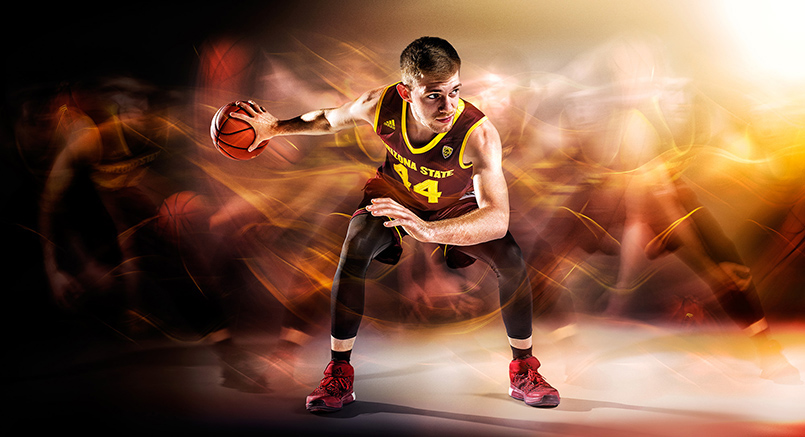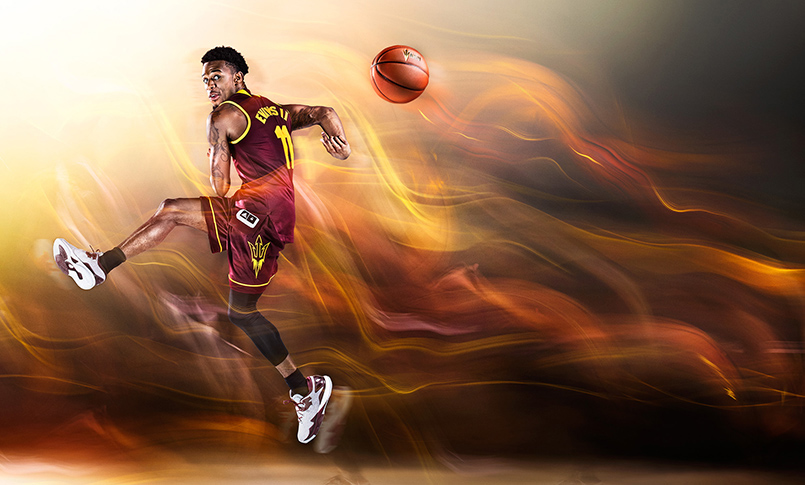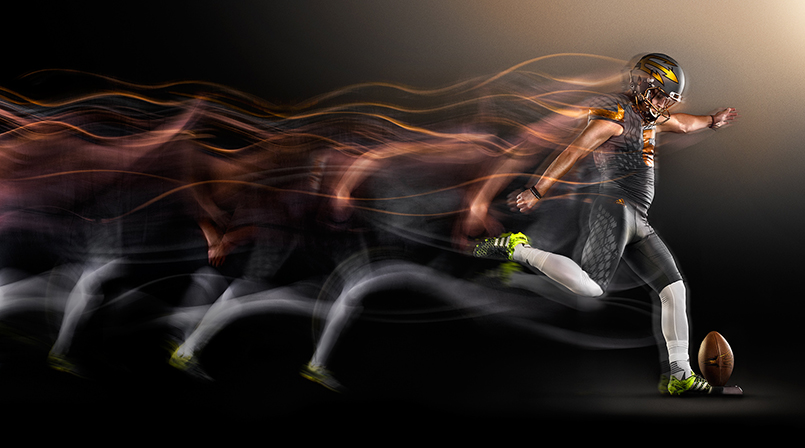For a significant amount of time, we started to see commercial photography offer its hand to motion in a way that was formed with confusion and a broad-spectrum desire to please. Photographers were now calling themselves “directors” and the waters muddied of what our responsibilities were on a set. It seemed a result of one camera (the Canon 5D Mk2) but carried over to all of the brands as the “need” for still cameras that shot motion grew.

For me, it was not an avenue I wanted to pursue, for a drive to learn motion would only impair my ability to control the still aspect of my work. However, for many, the desire to be a motion director was the stronger arm in the wrestle and the conversion began. Before we knew it, still cameras were seeing large mics and crazy braces attached to them in an effort to show how “convenient” a DSLR shooting video could be. It had all the making of someone building their own computer and describing the workarounds they used in order to make it run like one purchased from a manufacture.
Eight years have passed since the release of the 5D Mk2 and the waters are finally beginning to settle. We are seeing cameras that make great images and great video appear and though both functions exist on most (if not all) cameras sold, it is clear the manufacture’s intended purposes. While tempted on some occasions, I never made the crossover to motion. Even when I made my Super Bowl commercial, I still shot stills and let the motion that lived within the frame be created in a parallax. For a long time, I wondered if I had made the right decision, but over the past couple years I have found that being the jack of all trades would have left me the master of none.

However, during a conversation over a glass of Cab from one of my favorite vinters (Daou) I began to question whether the still frame could still show my audience what life and movement existed within the frozen action they saw. In a sense, I wanted to tell them what existed before I pressed the shutter and after it had closed.
The idea of traces of light providing the motion and a strobed image proving the still is what I felt would create this expression the best, but how to do it remained. There were a few options that my team and I tested in the studio before settling on a workflow that produced the needed drama to captivate.
We designed multiple sets of lighting all on a single stage. Instead of making this campaign a CGI monster, we would strive to capture the imagery in the camera as much as possible. Hot lights were setup in patterns that would contrast the movement and color the best, while strobes were arranged in a completely separate way as to best compliment the subject. To say that the lighting scheme was complex is an understatement, for there was virtually no crossover between subjects. The light scheme that worked best for one sports motion would be completely different than that of another motion, no matter how similar they seemed.

What resulted was moving (forgive the pun). The images were so much more unique that going into Photoshop and drawing streaks of light on an athlete, for they were authentic. While my head hurt at the end of each day, it was worth it. To me, the images reminded me how much art I had forgotten about when watching a sport. From a basketball player gliding through the air, to a football player kicking through the ball, the story of the moment existed in one frame.


[…] My initial approach was going to blend the lights of both aspects of the image to form the final, but this is just not possible. What we found with this approach was that the motion we were describing to the viewer was confused and non-descript in what was taking place, other than movement existed. For these reasons, we had to create lighting setups individually for still and motion. Still was much broader, large light sources, while the motion was small, more specular and at many times moving sources. For example, with the dribbling basketball images, we had an assistant running with the light alongside the player. The next issue we faced was that of the exposure itself. Combining drastic differences in Kelvin and ISO meant there was a lot of math going on behind the scenes so that we didn’t waste time on set. Besides having to lock down the camera for the frame to be consistent, we had to make sure the light was broad enough to match the contrast ration in both parts of the image. If I were to do it again, I would probably just have the motion created in Photoshop, as it would be much easier, but would come at the cost of authenticity. At the end of the day, it is the tougher shoots that teach us the most, so I will be happy with the education that this campaign provided. You can read my full post here. […]
[…] My initial approach was going to blend the lights of both aspects of the image to form the final, but this is just not possible. What we found with this approach was that the motion we were describing to the viewer was confused and non-descript in what was taking place, other than movement existed.For these reasons, we had to create lighting setups individually for still and motion. Still was much broader, large light sources, while the motion was small, more specular and at many times moving sources. For example, with the dribbling basketball images, we had an assistant running with the light alongside the player. The next issue we faced was that of the exposure itself. Combining drastic differences in Kelvin and ISO meant there was a lot of math going on behind the scenes so that we didn’t waste time on set. Besides having to lock down the camera for the frame to be consistent, we had to make sure the light was broad enough to match the contrast ration in both parts of the image. If I were to do it again, I would probably just have the motion created in Photoshop, as it would be much easier, but would come at the cost of authenticity. At the end of the day, it is the tougher shoots that teach us the most, so I will be happy with the education that this campaign provided. You can read my full post here. […]
Great work as always, Blair!
[…] couple years ago I created a piece of work that was a photographic study in the motion of sports. It featured athletes from a number of different sports going through the motions they do on the […]